The Jay Hotel pays homage to John Portman’s San Francisco
The Jay Hotel’s interiors, designed by AvroKO, pay tribute to the building’s architect, John Portman, as well as lesser-known figures from the city’s past
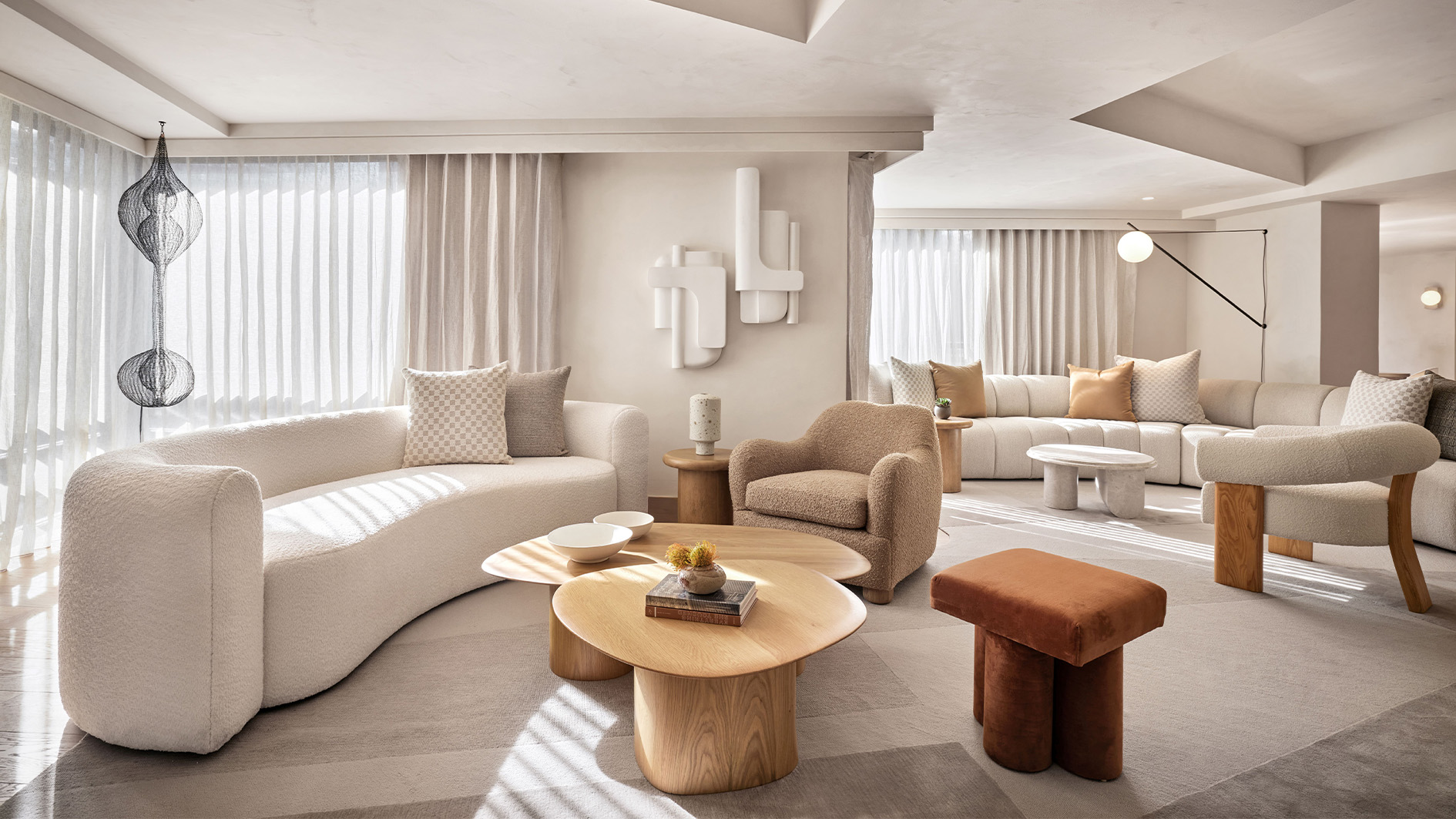
Architect John Portman’s influence on Downtown San Francisco is inescapable. Renowned for his neo-futurist geometries and monumental atriums – as seen at the wedge-shaped Hyatt Regency that forms part of his larger-than-life Embarcadero Center – the late innovator completely reshaped hotel design in the city and across the US during the second half of the 20th century.
Discover The Jay, designed by AvroKO
A few blocks away from the Hyatt, still in the heart of the Financial District, another Portman building that features jagged concrete façades was recently renovated by US design studio AvroKO and reopened as The Jay. Part of Marriott Bonvoy’s high-end Autograph Collection, the 360-key property is marketed as a boutique hotel to compete with the likes of the Kelly Wearstler-designed Proper, and was designed as an ode to its original architect, as well as some of San Francisco’s more obscure historical figures. ‘Not the usual suspects, but lesser-known artists and activists – people that you really only know about as a lifelong resident,’ said Greg Bradshaw, principal and co-founder of AvroKO.
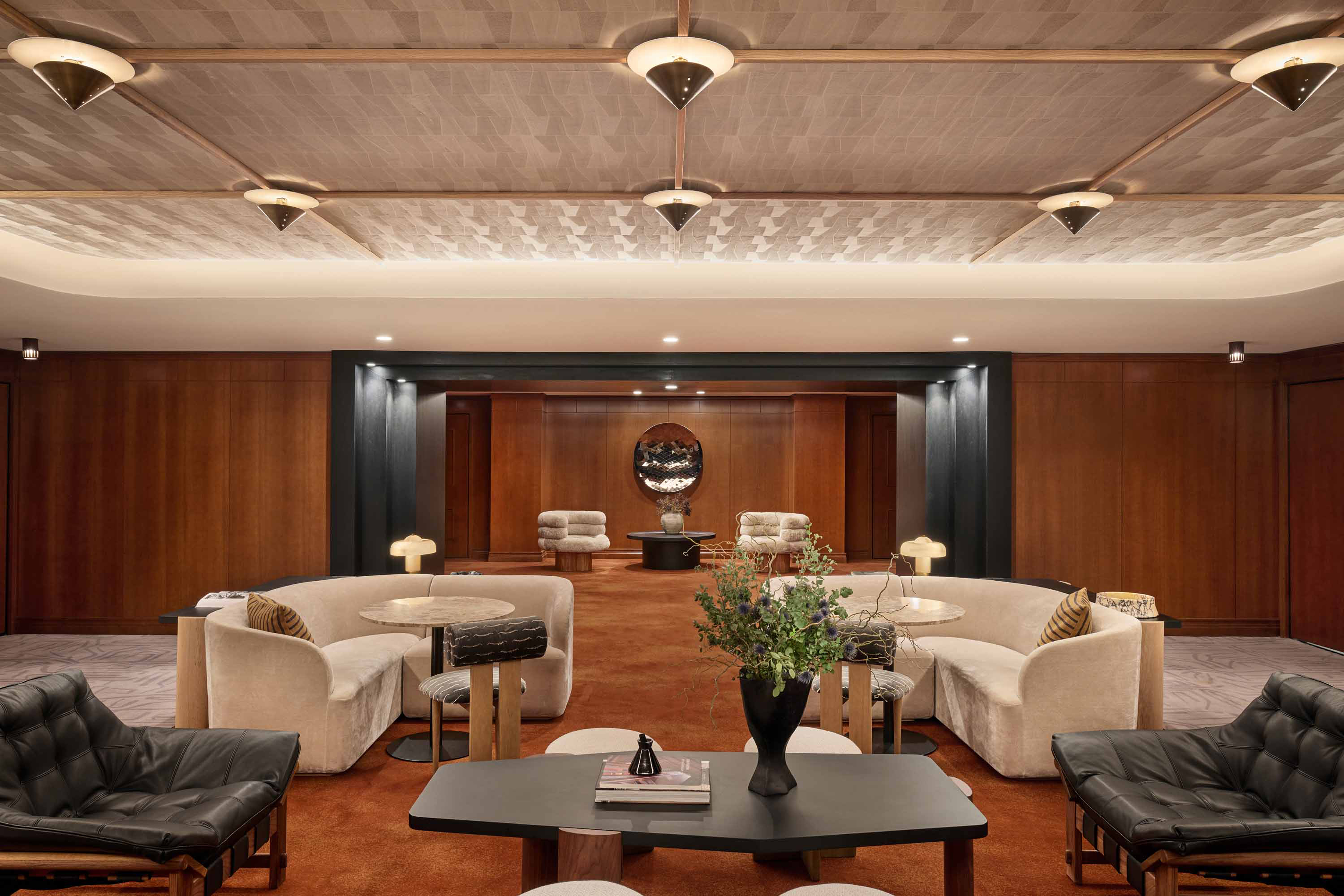
Lounge seating
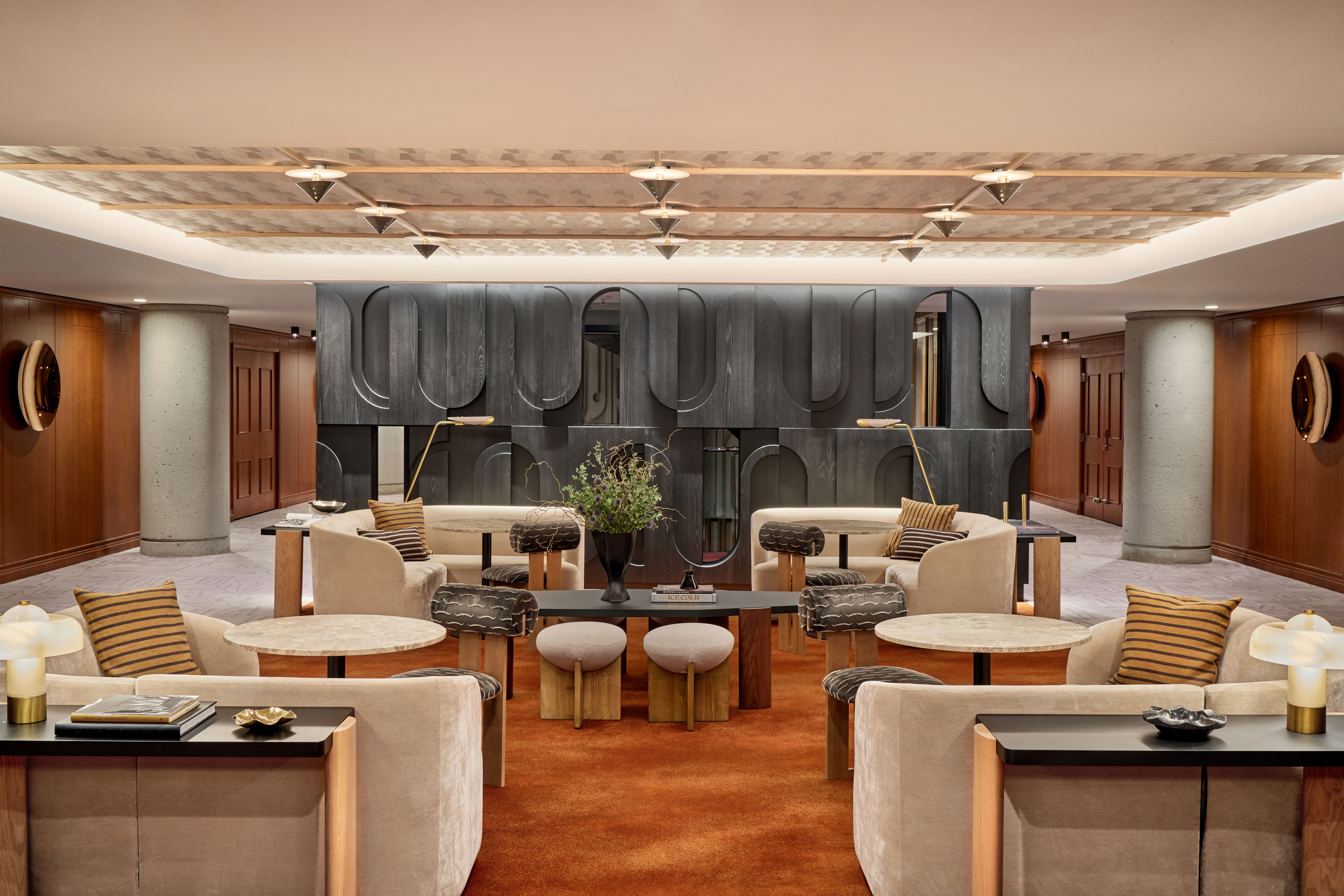
Lounge seating
The studio used Portman’s signature brutalist style as a reference for interior elements such as relief-panel screens and carpet and upholstery patterns in the hotel’s communal areas, which were reorganised to group all public amenities on one level.
‘The biggest challenge was the vertical circulation between the first-floor entry and the third-floor lobby,’ explained Bradshaw, whose team installed a grand spiral staircase based on a design at Portman’s home in Atlanta. This oversized reinterpretation revolves around a sculptural golden pole at its centre, ‘encouraging people to use the stairs as much as possible’ up to the reception, lounge, coffee bar, and various areas for drinking and dining.
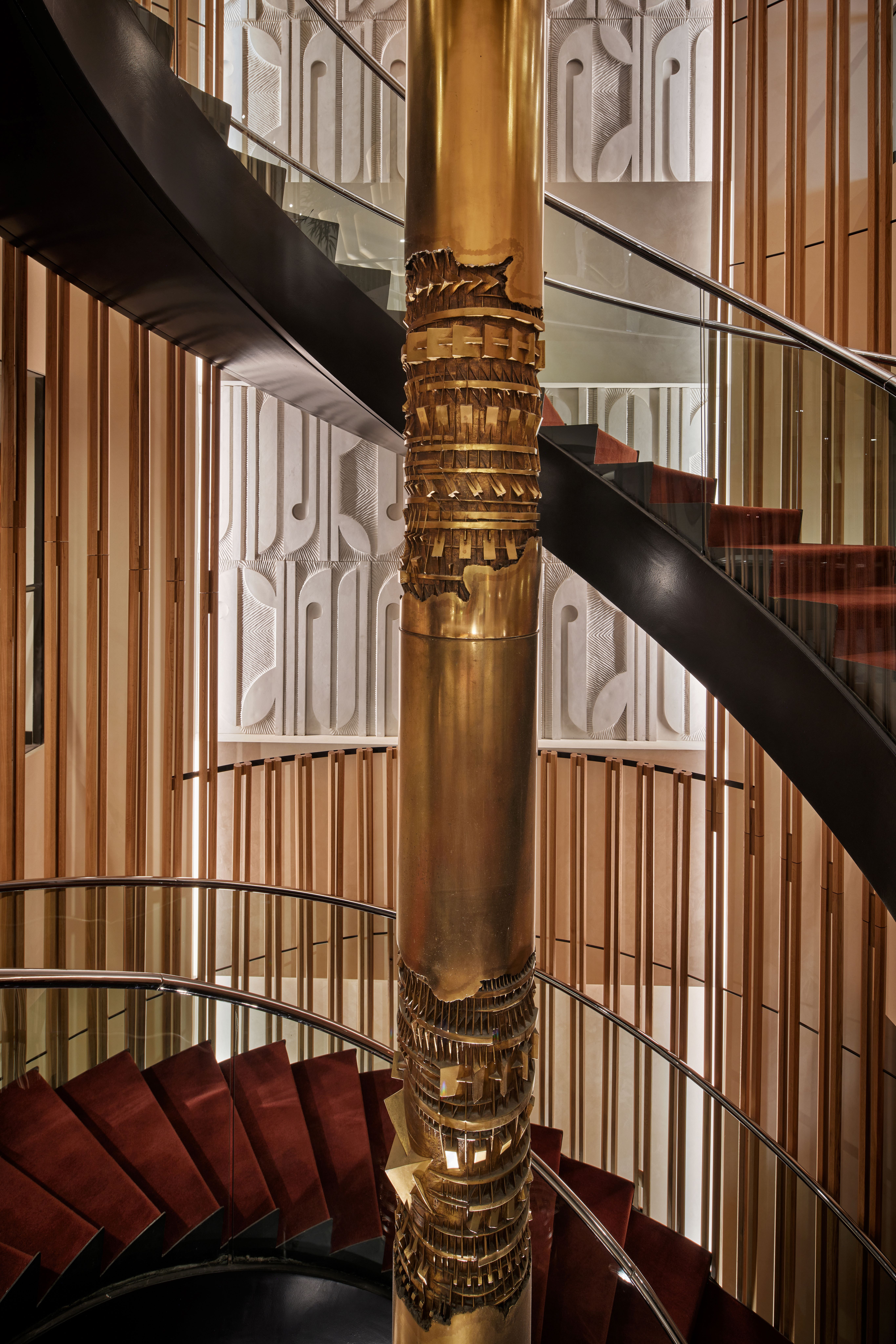
Staircase detail
The food and beverage programme for The Third Floor is led by Michael Magallanes, executive chef of the award-winning Omakase Group, who has crafted breakfast, lunch, and dinner menus from local sources to be enjoyed either in the indoor dining room or out on The Terrace.
The outdoor space also nods to Portman, with colours and prints of the soft furnishings lifted from a photo of the architect on a San Francisco doorstep in the 1970s. Surrounded by a variety of native plants, there are also fire pits, a retractable pergola, windbreaks in case of inclement weather, and a full bar for patrons to enjoy during entertainment programming. For those seeking a cosier refuge, tucked away beyond the 360-degree lobby bar is a leather-wrapped lounge, which can be hired for private seated dinners or cocktail events.
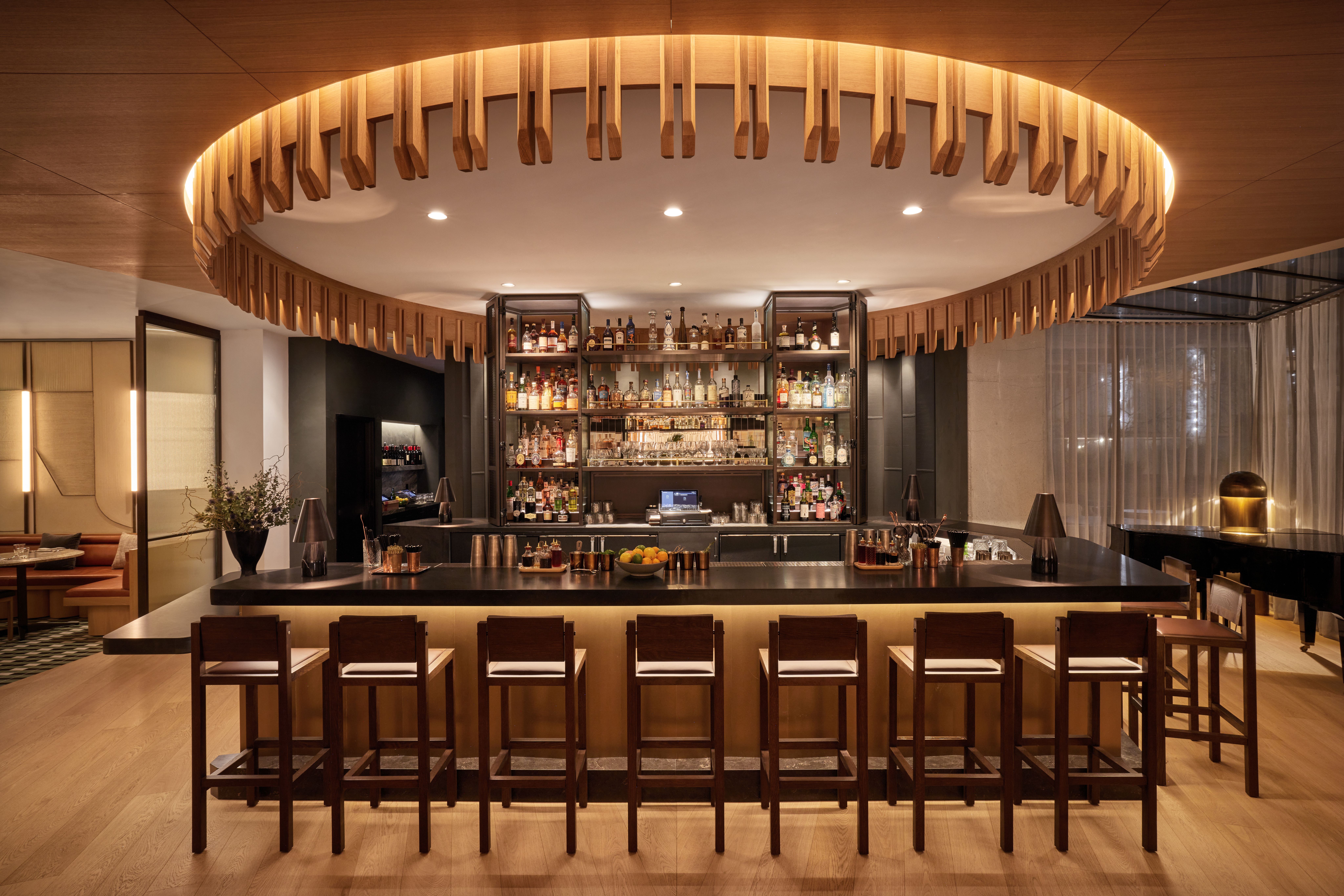
Bar Lounge

In contrast with the heavy concrete exterior and darker-toned lobby area, the guest rooms feature much cleaner and lighter decor while evoking brutalist forms. AvroKO looked to the counterculture of 1960s San Francisco to inform these interiors.
Wallpaper* Newsletter
Receive our daily digest of inspiration, escapism and design stories from around the world direct to your inbox.
‘The transformative thinking of the era shows up in patterns, distortions and reflections, and different screening elements used throughout the hotel,’ said Bradshaw, who listed influences ranging from boutique owner Peggy Caserta to artist Ruth Asawa. The latter’s curvaceous, highly textured works were key references for the rounded furniture, patterned carpets, and colour palette of dark burgundy, black and bronze details that stand out against the otherwise neutral, airy hues and warm woods.

The Jay Residence Suite Living Area
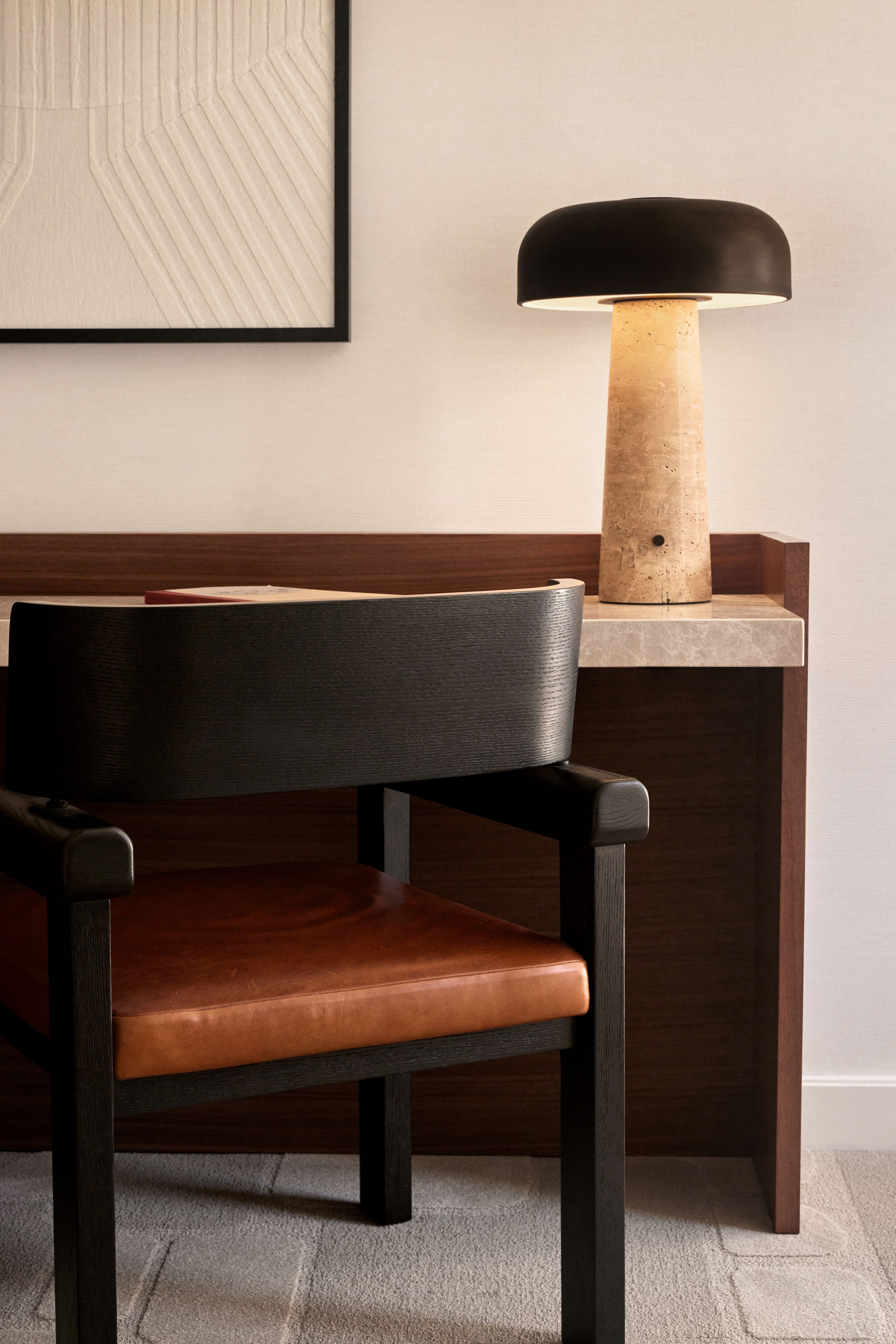
The Jay King Double Queen details
Angled floor-to-ceiling windows that wrap the bedrooms offer views of the Bay, the historic Coit Tower, and the downtown skyline. These vistas are best appreciated from The Nest, the hotel’s top-floor penthouse suite, which includes a living area, a dining area, a private king bedroom with an ensuite bathroom, and a guest bath totalling 1,660 sq ft.
Textured plaster surfaces in a variety of calming shades, together with soft bouclé fabrics and plentiful natural light, form a serene oasis that appears a world away from Portman’s brutalist architecture – even though the angular shapes of his building are ever-present.

Jay Luxury One Bedroom Suite Balcony
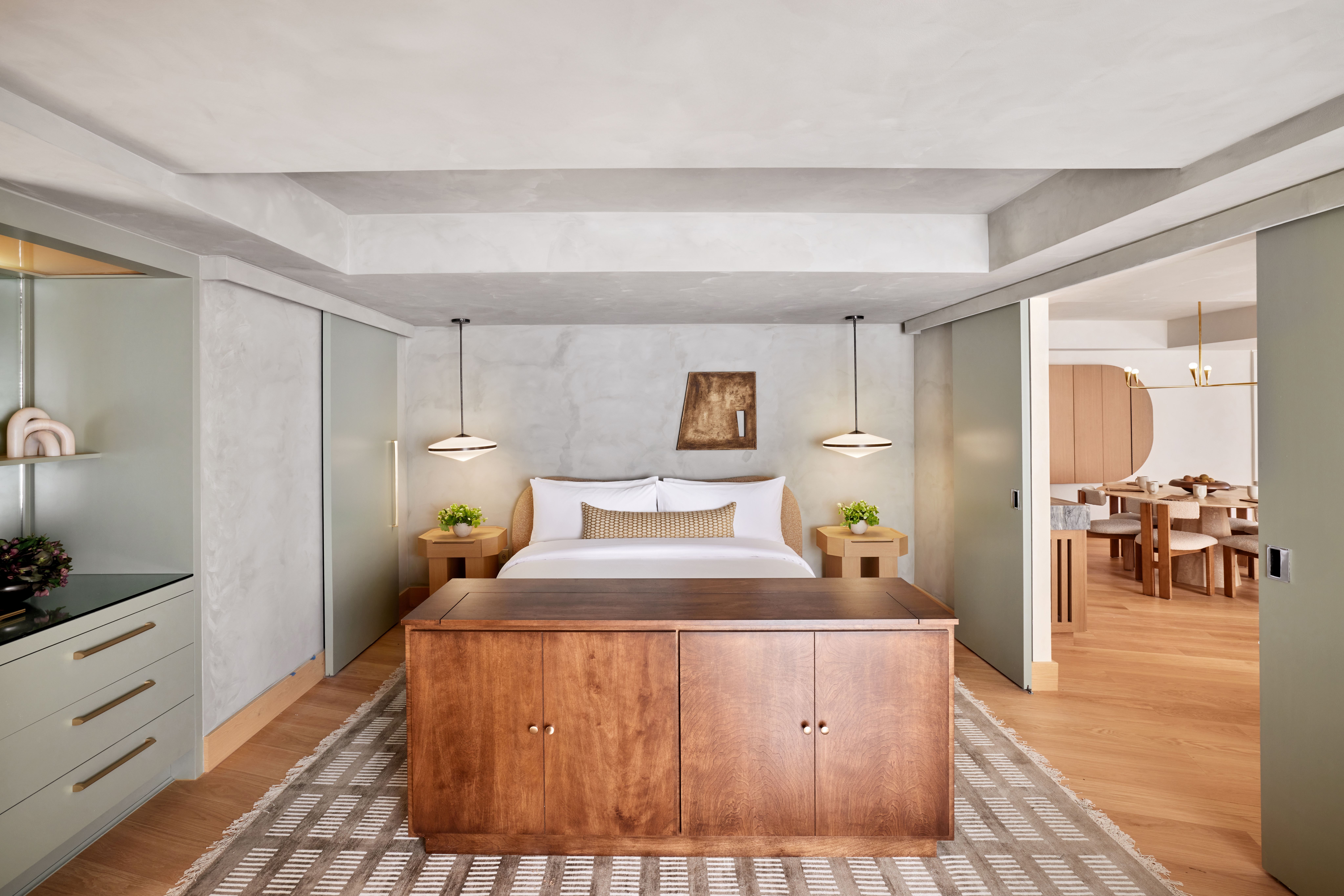
Penthouse Bedroom and Living Area
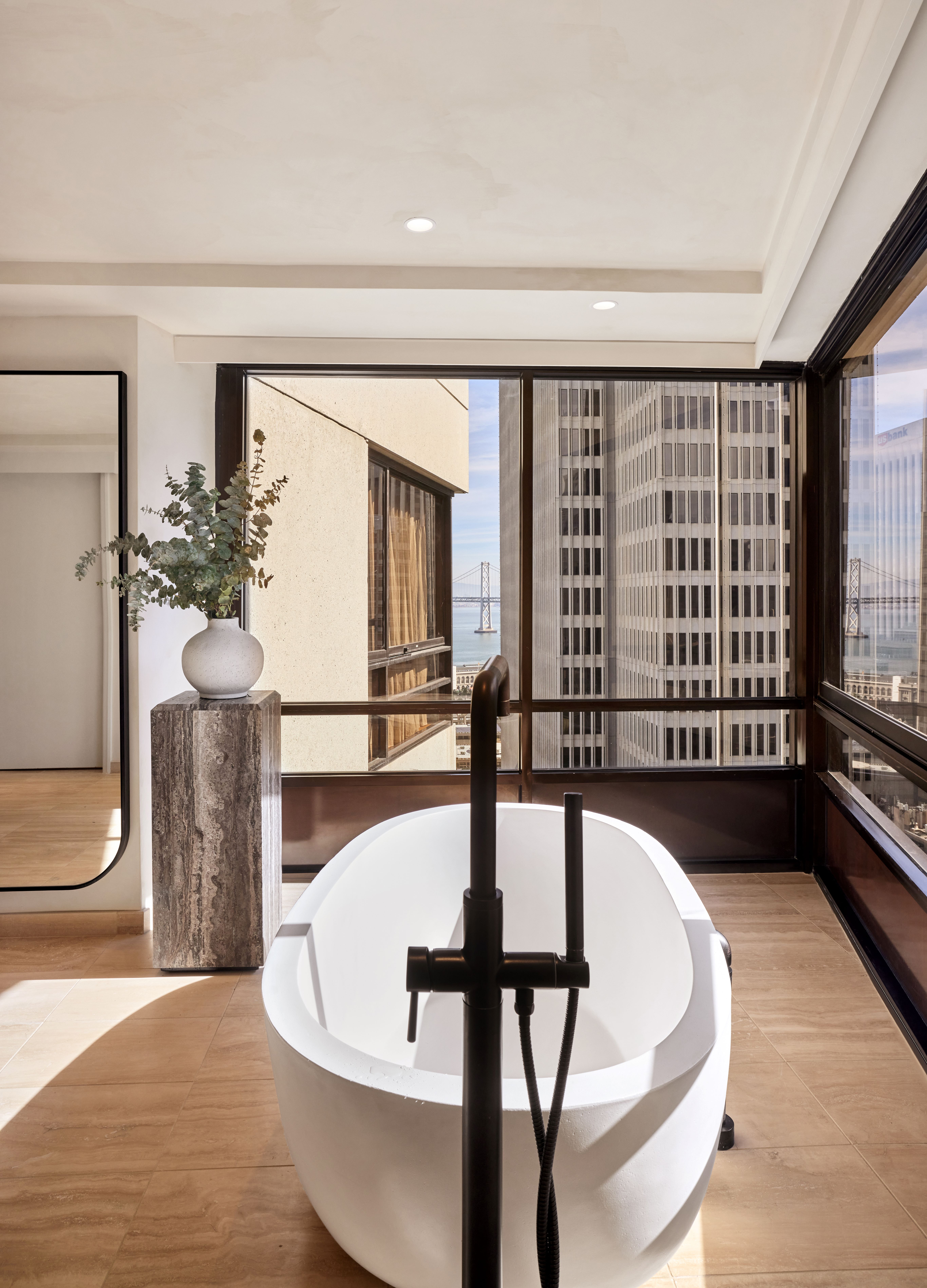
Penthouse Bathtub
Dan Howarth is a British design and lifestyle writer, editor, and consultant based in New York City. He works as an editorial, branding, and communications advisor for creative companies, with past and current clients including Kelly Wearstler, Condé Nast, and BMW Group, and he regularly writes for titles including Architectural Digest, Interior Design, Sight Unseen, and Dezeen, where he previously oversaw the online magazine’s U.S. operations. Dan has contributed to design books The House of Glam (Gestalten, 2019), Carpenters Workshop Gallery (Rizzoli, 2018), and Magdalena Keck: Pied-À-Terre (Glitterati, 2017). His writing has also featured in publications such as Departures, Farfetch, FastCompany, The Independent, and Cultured, and he curated a digital exhibition for Google Cultural Institute in 2017.
-
 Put these emerging artists on your radar
Put these emerging artists on your radarThis crop of six new talents is poised to shake up the art world. Get to know them now
By Tianna Williams
-
 Dining at Pyrá feels like a Mediterranean kiss on both cheeks
Dining at Pyrá feels like a Mediterranean kiss on both cheeksDesigned by House of Dré, this Lonsdale Road addition dishes up an enticing fusion of Greek and Spanish cooking
By Sofia de la Cruz
-
 Creased, crumpled: S/S 2025 menswear is about clothes that have ‘lived a life’
Creased, crumpled: S/S 2025 menswear is about clothes that have ‘lived a life’The S/S 2025 menswear collections see designers embrace the creased and the crumpled, conjuring a mood of laidback languor that ran through the season – captured here by photographer Steve Harnacke and stylist Nicola Neri for Wallpaper*
By Jack Moss
-
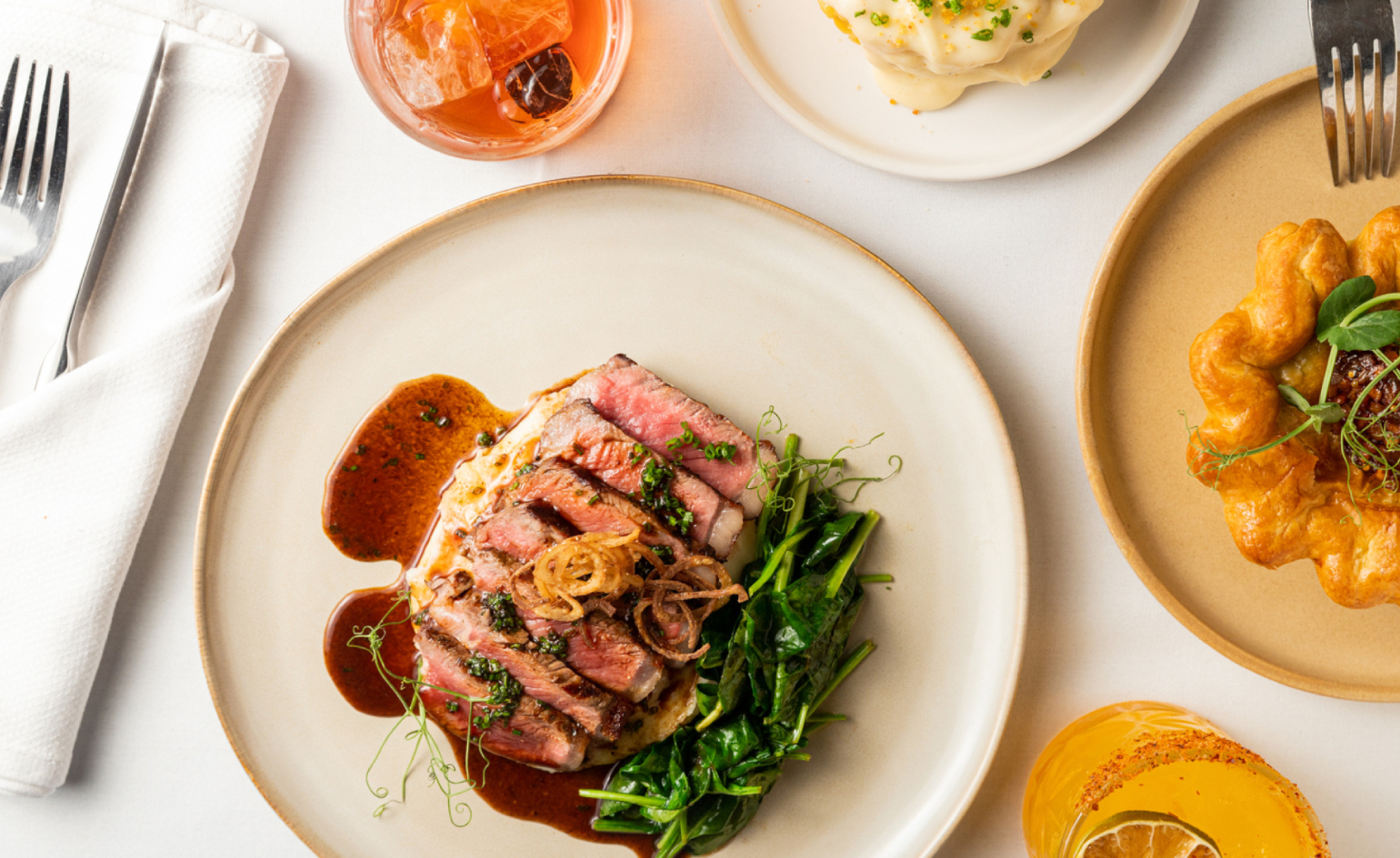 At Linden Los Angeles, classic New York comfort food gets its due
At Linden Los Angeles, classic New York comfort food gets its dueThe restaurant, inspired by a stretch of boulevard bridging Brooklyn and Queens, honors legacy, community and pleasure
By Carole Dixon
-
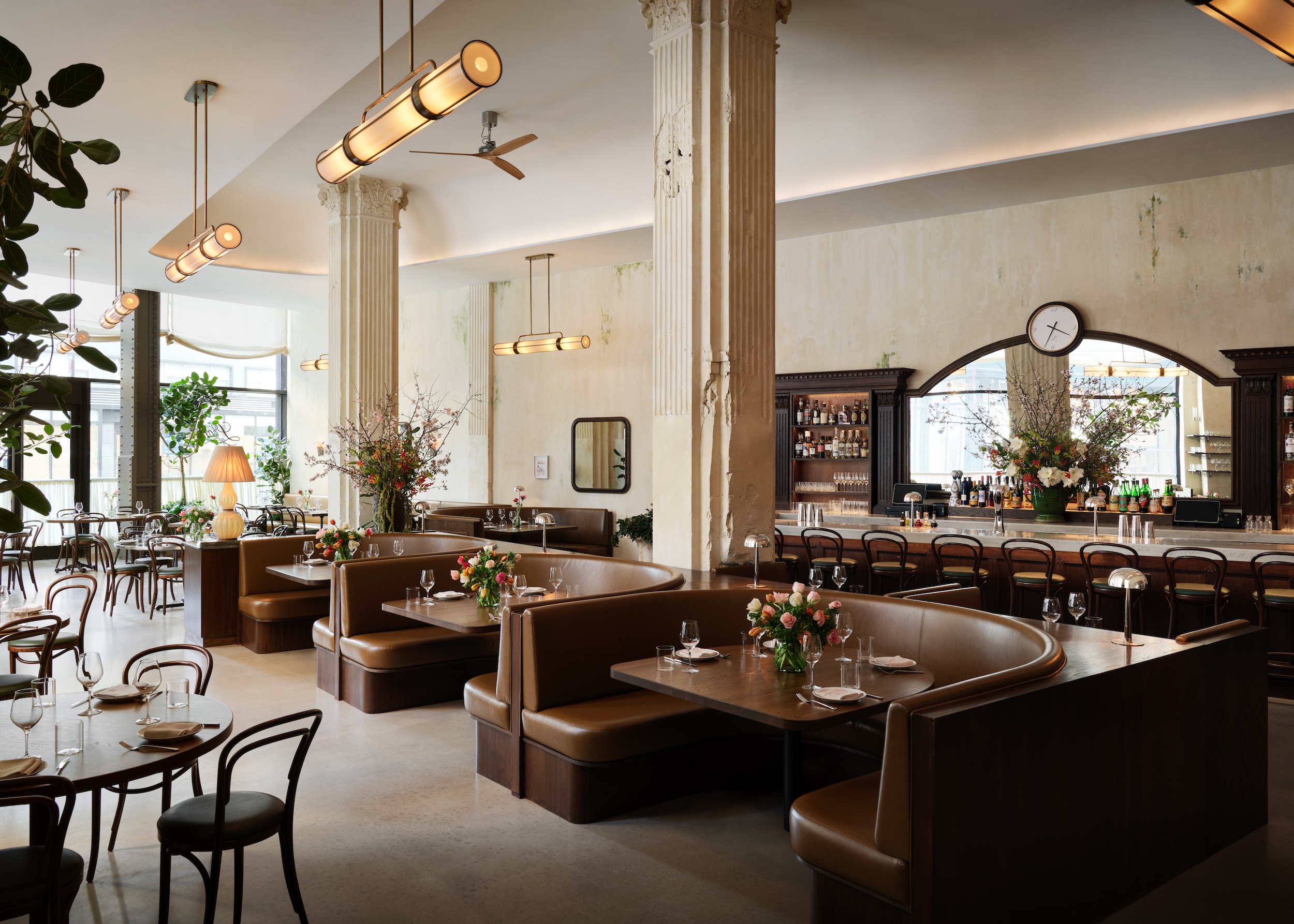 This atmospheric New York restaurant was designed to be a ‘beautiful ruin’
This atmospheric New York restaurant was designed to be a ‘beautiful ruin’At Leon’s, classic Italian fare comes with a North African accent and with a side of family history
By Anna Fixsen
-
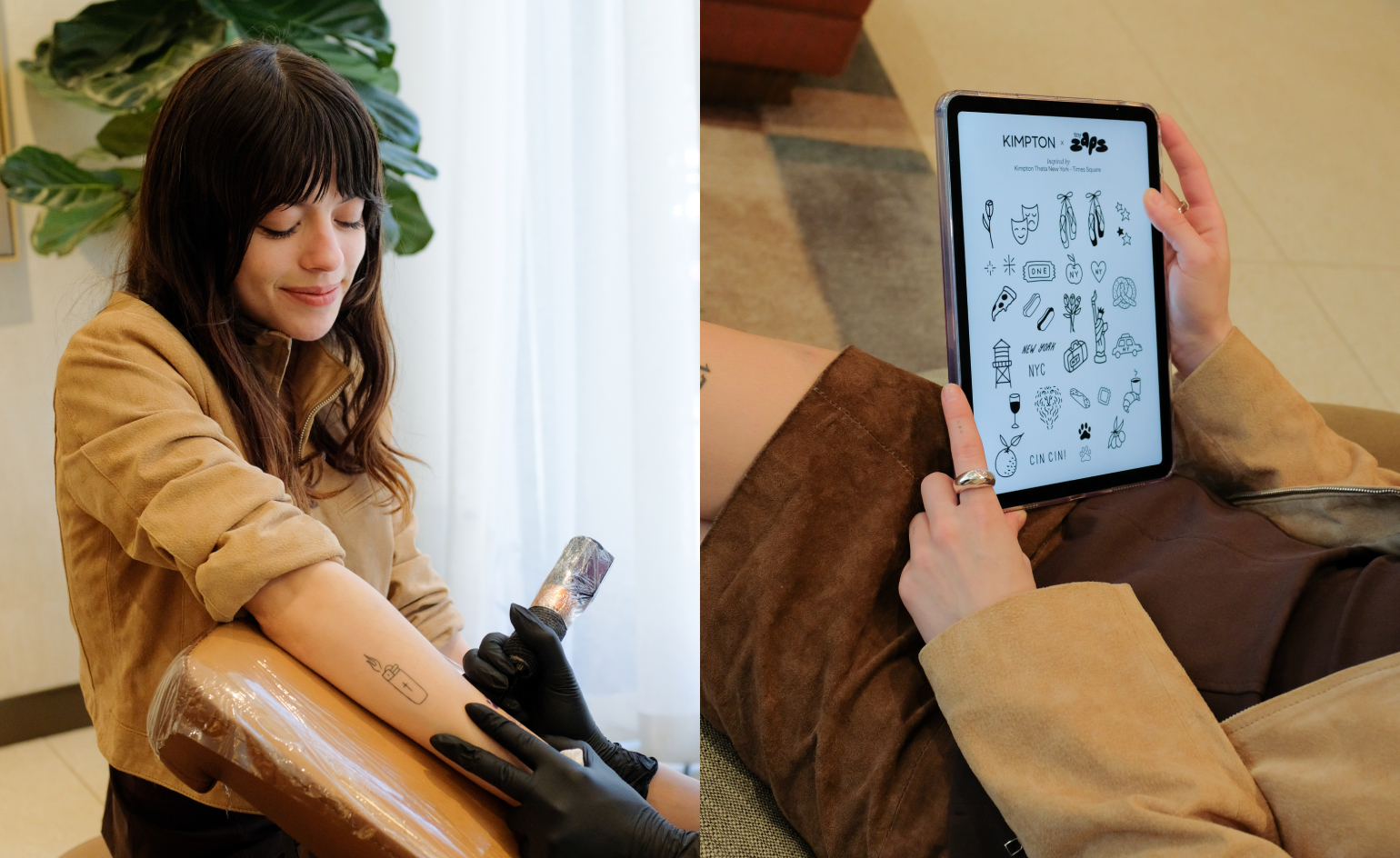 Is a tiny tattoo the best holiday souvenir? Kimpton Hotels think so
Is a tiny tattoo the best holiday souvenir? Kimpton Hotels think soIn partnership with Tiny Zaps, Kimpton Hotels is bringing city-inspired tattoo pop-ups to five U.S. locations
By Sofia de la Cruz
-
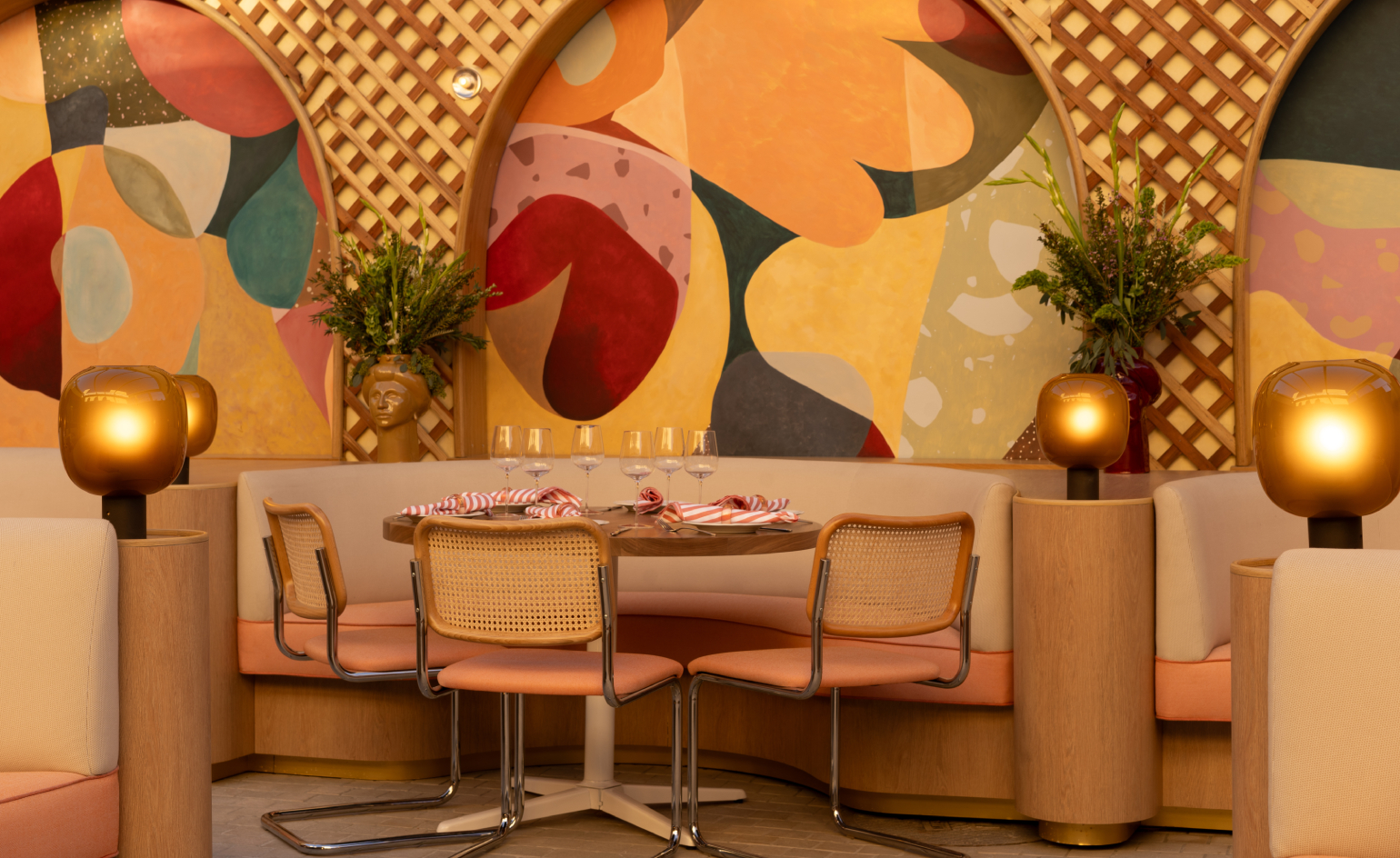 Alba Los Angeles is an Italian vacation disguised as a restaurant
Alba Los Angeles is an Italian vacation disguised as a restaurantThis buzzy NYC import brings a slice of la dolce vita to West Hollywood
By Carole Dixon
-
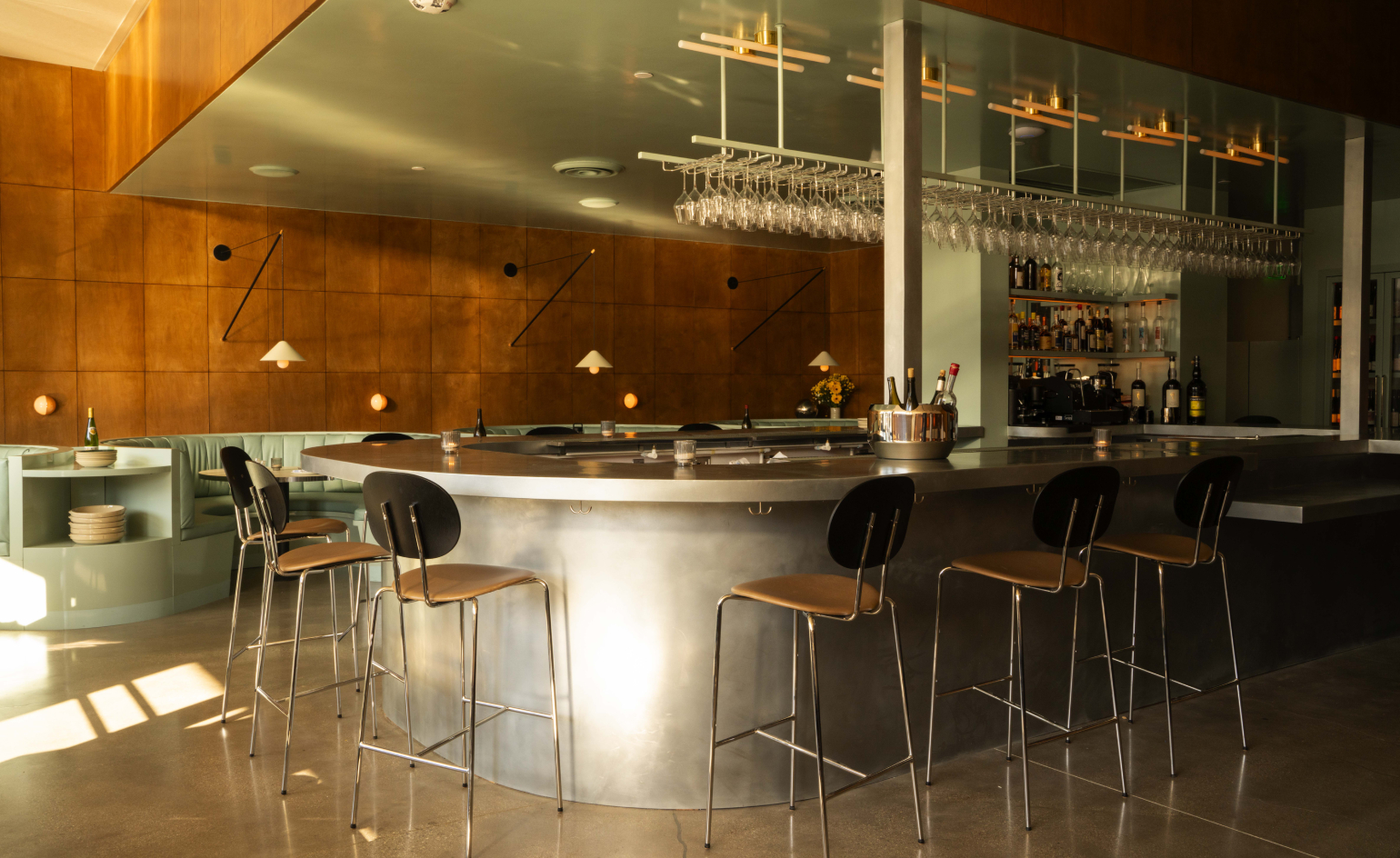 At Bar Etoile, Scandi-chic meets leisurely Los Angeles
At Bar Etoile, Scandi-chic meets leisurely Los AngelesThis new Melrose Park joint mixes art-world references, French bistro vibes and an out-of-this-world martini
By Carole Dixon
-
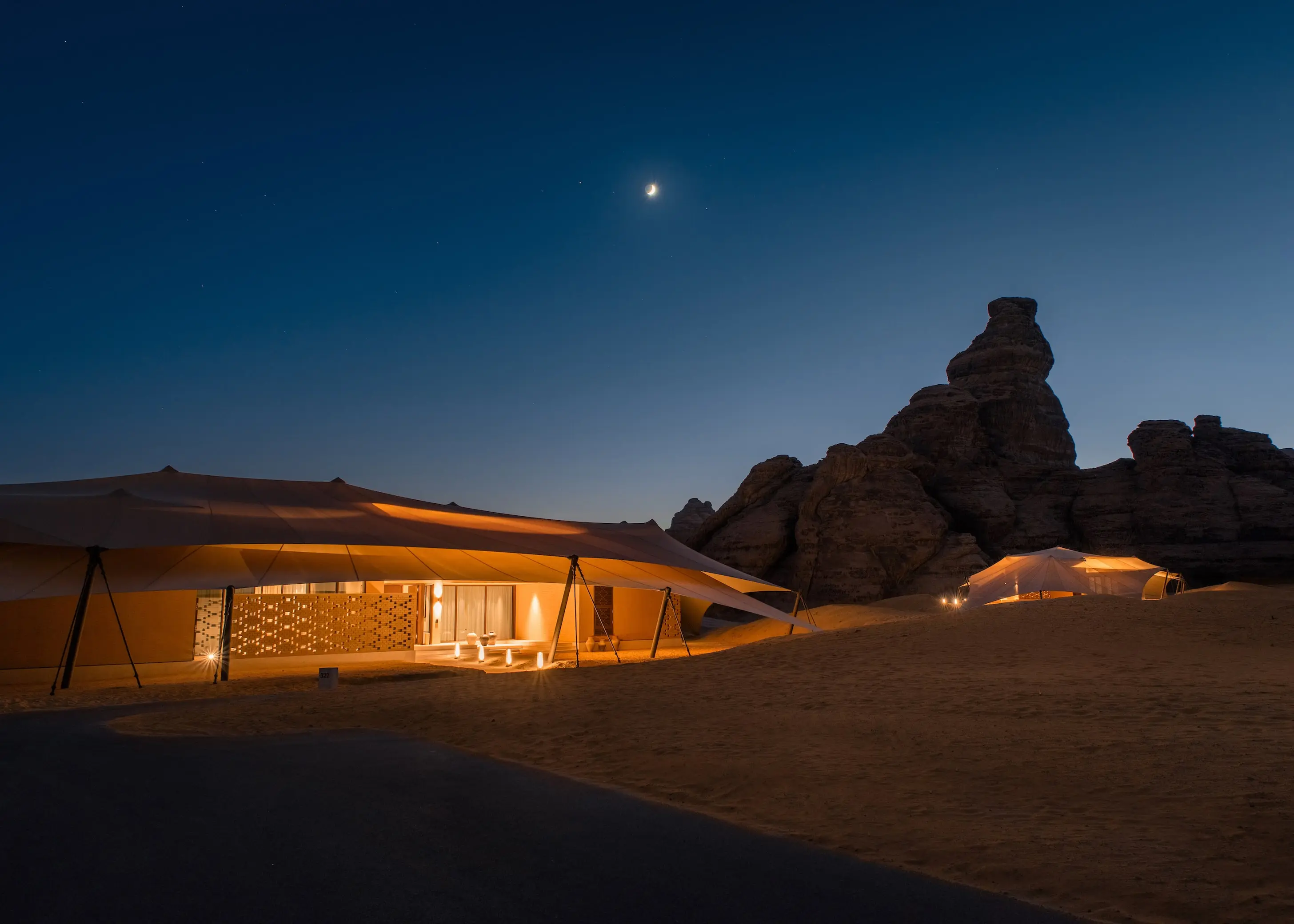 The world's most heavenly destinations for astrotourism in 2025
The world's most heavenly destinations for astrotourism in 2025We're in for a big year for celestial events. These are the world's best hotels to see the cosmos as you've never seen it before
By Anna Solomon
-
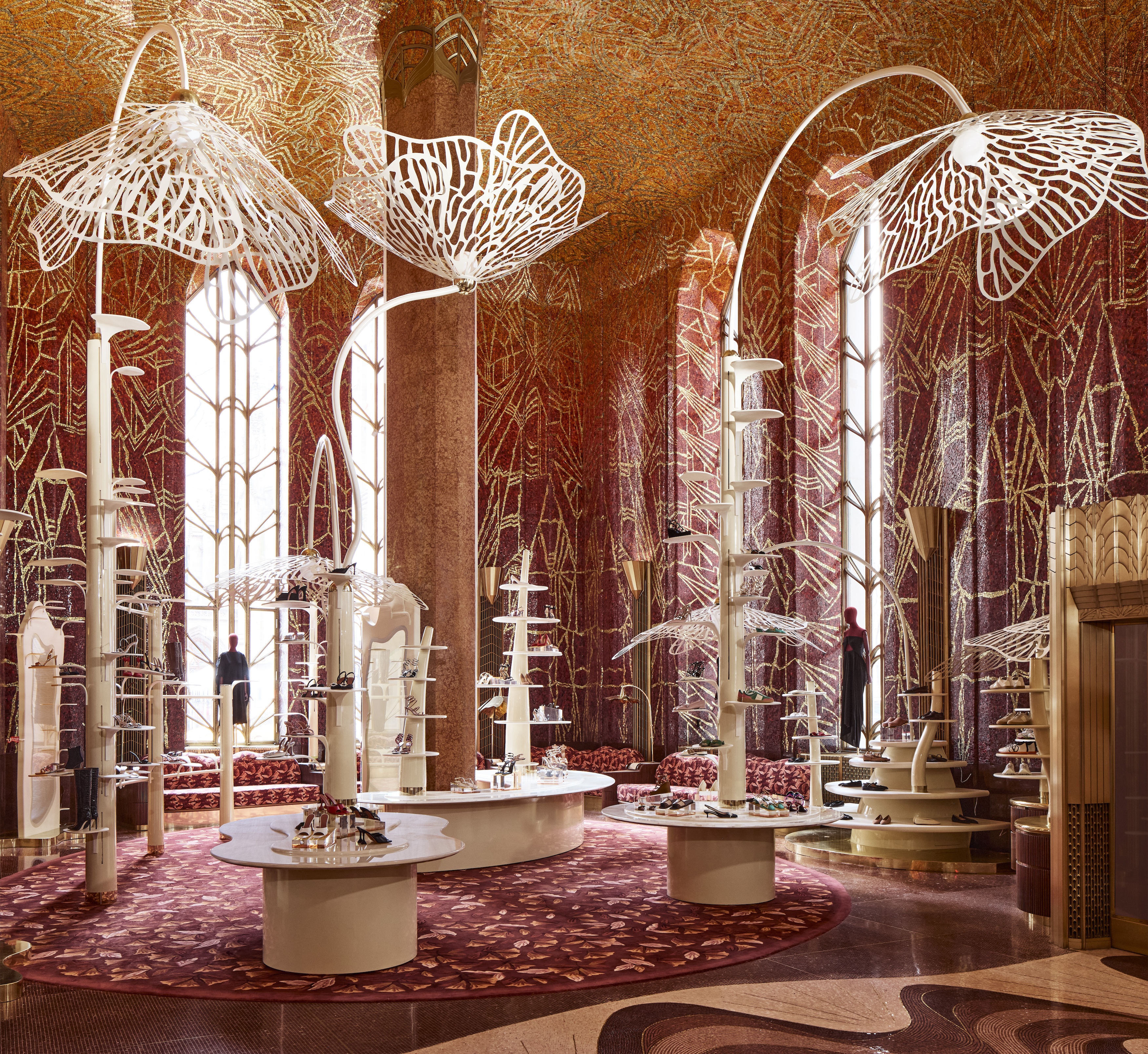 Printemps' New York outpost blooms with possibility – and enchanting design
Printemps' New York outpost blooms with possibility – and enchanting designThanks to designer Laura Gonzalez, this new retail mecca blooms colour, atmosphere and narrative
By Anna Fixsen
-
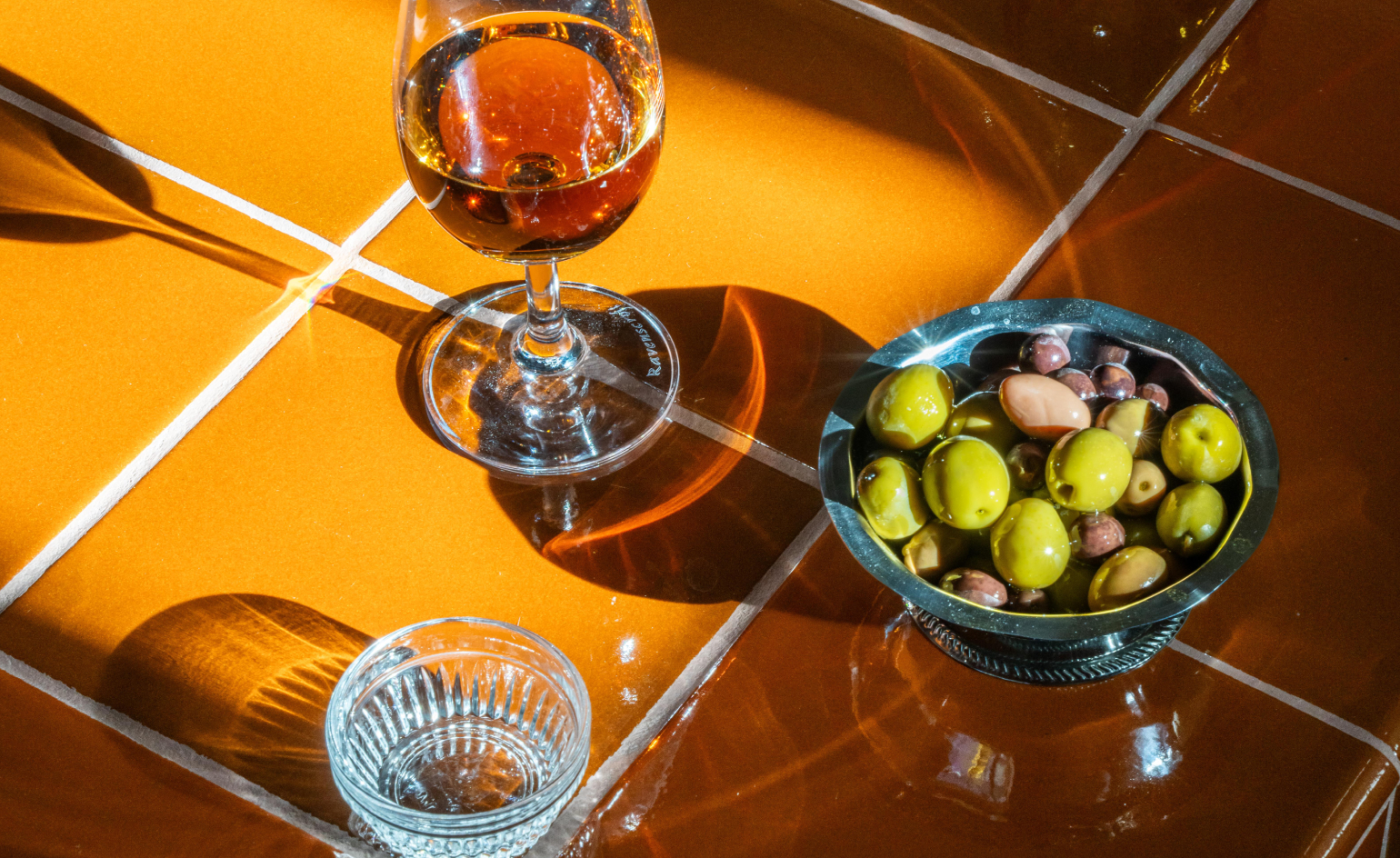 At Bar Siesta in Los Angeles, meals linger and moods perk up
At Bar Siesta in Los Angeles, meals linger and moods perk upThis new Silver Lake hotspot showcases Spain's design, culture, and delectable tinned fish
By Carole Dixon